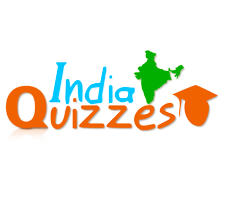Question: Diseases of which of the following pairs are caused by virus?
1. Polio and Bird Flu
2. Malaria and Polio
3. Polio and Tuberculosis
4. Tuberculosis and Influenza
Answer: 1
Question: Nepenthes Khasiana, a rare and endangered plant is found in-
1. Meghalaya
2. Himachal Pradesh
3. Madhya Pradesh
4. Uttar Pradesh
Answer: 1
Question: Opium is obtained from which part of the poppy plant?
1. Unripe Fruits
2. Flower
3. Leaves
4. Roots
Answer: 1
Question: Amongst the following flying organisms, which one does not belong to the group, Aves?
1. Eagle
2. Parrot
3. Crow
4. Bat
Answer: 4
Question: which one of the following spices is a floral bud?
1. Pepper
2. Clove
3. Cumin
4. Turmeric
Answer: 2
Question: Due to contraction of eyeball, a longsighted eye can see only
1. father objects which is corrected by using convex lens
2. father objects which is corrected by using concave lens
3. nearer objects which is corrected by using convex lens
4. nearer objects which is corrected by using concave lens
Answer: 1
Question: White blood cells act
1. as a defence against infection
2. as source of energy
3. for clotting blood
4. as a medium for oxygen transport from lung to tissues
Answer: 1
Question: Insects that can transmit diseases to humans are referred to as
1. Vectors
2. Carriers
3. Reservoirs
4. Incubators
Answer: 1
Question: Which one among the following statements about stomach is not correct?
1. Stomach acts as a temporary reservoir
2. Stomach mixes food with gastric juice
3. Stomach secretes lipase and amylase in gastric juice
4. Rate of stomach emptying depends on the type of food
Answer: 3
Question: Which one of the following organs break fat to produce cholesterol?
1. Intestine
2. Liver
3. Lungs
4. Kidneys
Answer: 2

Select Page

